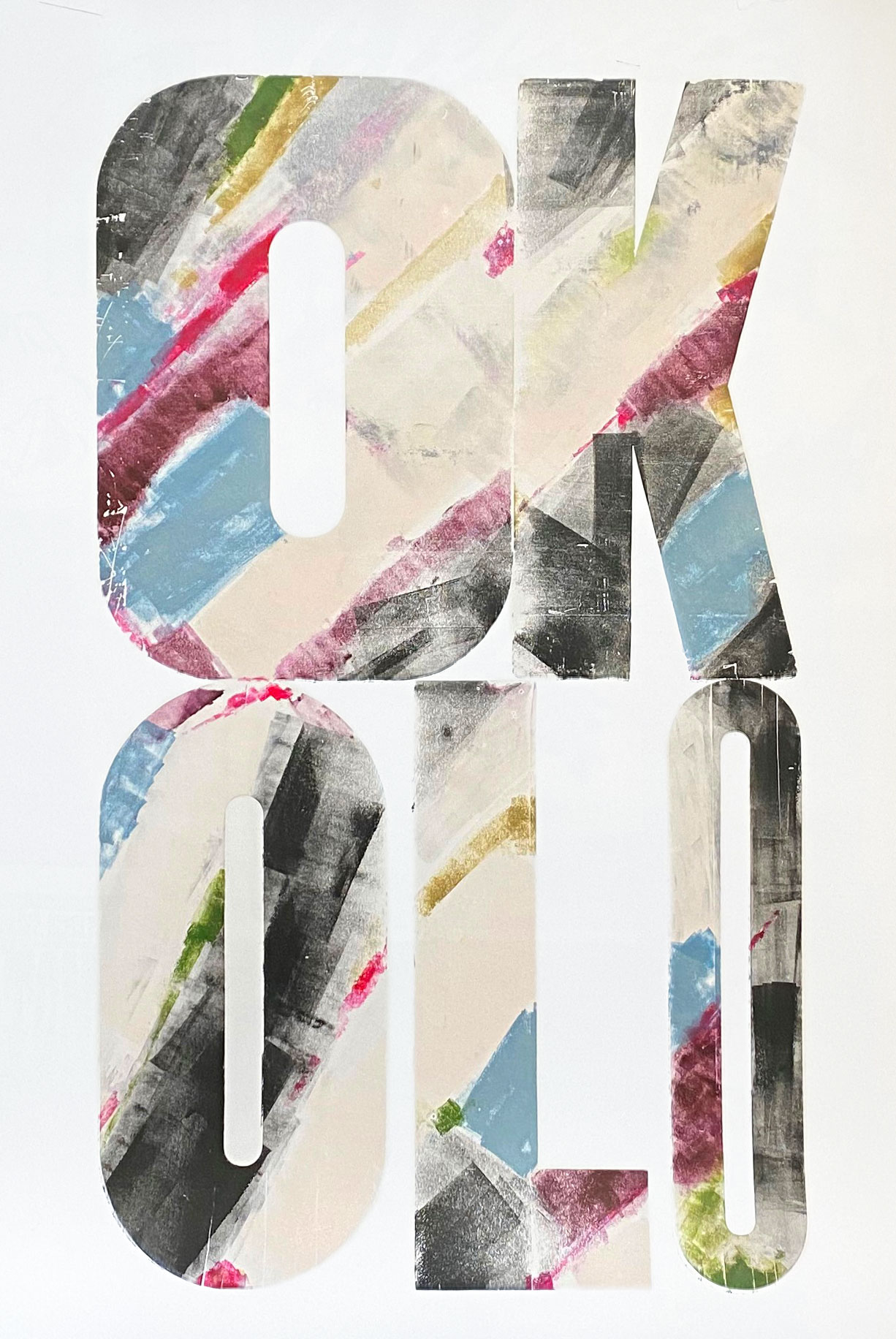Letterpress
Wood type
Edition of 3 each
Wood type
Edition of 3 each
Kolo Okolo
Kolo: Eng. a Slavic dance performed in a circle.
Okolo: BCS languages: Around
In the spring of 2022, I visited Hamilton Wood Type and Printing Museum to produce work using their wood type collection. For many years, I have been visiting this working museum in Wisconsin at the historic location of the most significant American factory that produced printing type. Their collection includes typographic printing plates used to print communication materials in the 19th and 20th-century. The pre-digital marvel is now a world-known museum that boasts the most extensive collection of historic wood type in the United States—and one of the biggest in the world.
Working at the museum, I met retired workers from the factory and their families. Spending time surrounded by the factory equipment and tools, I immersed myself in its history. The fascinating history of Hamilton, founded in 1880 and initially called J.E. Hamilton Holly Wood Type Company, parallels the rise and fall of manufacturing in the United States. The extensive collection at Hamilton now includes some of the most significant wood type available to print. I was drawn to these letterforms and decided to work with large typographic printing plates.
I returned to the museum on several occasions to produce two projects, each composed of multiple prints printed in an edition of three to five. Physically demanding to print, the prints were to be displayed in sequence. My heightened body awareness while producing large format prints created a somatic release. I often likened moving with a printing press to a dance. In the first two prints I printed at Hamilton, the words printed evoked a traditional, collective Balkan folk dance. A kolo dance is performed by multiple dancers interlinked to form a chain, moving in a circle while holding hands. This collective dance is often accompanied only by singing and rhythmic stomping of the performers. It is self-perpetuating and not dependent on external musical cues. My interest in movement and the body as a site of both memory and overcoming the past led me to consider the somatic healing properties of this ancient ancestral expression.
When printing, my rhythmic, repetitive motions linked me through time to those who used the tools in the past. The movements felt both like a homecoming and a license to reimagine the usage of the tools at hand.
March 2022
Kolo: Eng. a Slavic dance performed in a circle.
Okolo: BCS languages: Around
In the spring of 2022, I visited Hamilton Wood Type and Printing Museum to produce work using their wood type collection. For many years, I have been visiting this working museum in Wisconsin at the historic location of the most significant American factory that produced printing type. Their collection includes typographic printing plates used to print communication materials in the 19th and 20th-century. The pre-digital marvel is now a world-known museum that boasts the most extensive collection of historic wood type in the United States—and one of the biggest in the world.
Working at the museum, I met retired workers from the factory and their families. Spending time surrounded by the factory equipment and tools, I immersed myself in its history. The fascinating history of Hamilton, founded in 1880 and initially called J.E. Hamilton Holly Wood Type Company, parallels the rise and fall of manufacturing in the United States. The extensive collection at Hamilton now includes some of the most significant wood type available to print. I was drawn to these letterforms and decided to work with large typographic printing plates.
I returned to the museum on several occasions to produce two projects, each composed of multiple prints printed in an edition of three to five. Physically demanding to print, the prints were to be displayed in sequence. My heightened body awareness while producing large format prints created a somatic release. I often likened moving with a printing press to a dance. In the first two prints I printed at Hamilton, the words printed evoked a traditional, collective Balkan folk dance. A kolo dance is performed by multiple dancers interlinked to form a chain, moving in a circle while holding hands. This collective dance is often accompanied only by singing and rhythmic stomping of the performers. It is self-perpetuating and not dependent on external musical cues. My interest in movement and the body as a site of both memory and overcoming the past led me to consider the somatic healing properties of this ancient ancestral expression.
When printing, my rhythmic, repetitive motions linked me through time to those who used the tools in the past. The movements felt both like a homecoming and a license to reimagine the usage of the tools at hand.
March 2022



